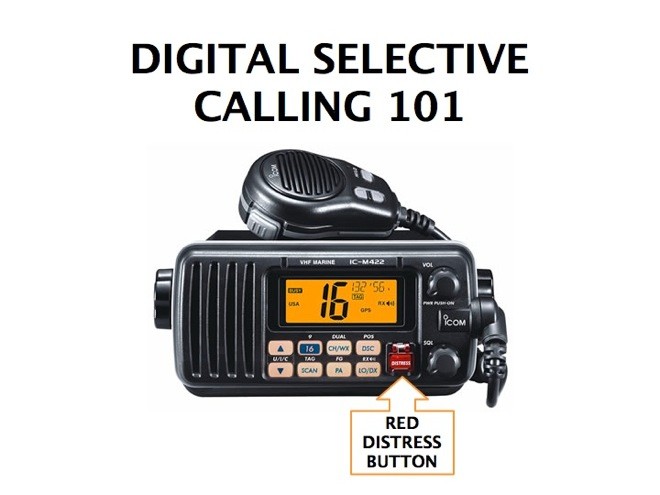Digital Selective Calling 'DSC 101'
by Ron Trossbach on 12 Mar 2011

SW
The use of Digital Selective Calling (DSC) in VHF and SSB radios is relatively new and not widely understood. Here are the Basics.
DSC definitely has a place in small boat operations and is simple to install with potentially huge safety benefits. It is no longer necessary to read latitude and longitude numbers over the radio in emergencies or when exchanging position information with another boat. DSC does this automatically in less than one second. The best part is that DSC should be in VHF and SSB radios built/sold in the US after June 17, 1999. The physical hookup is relatively simple - two wires between any model radio and any model GPS. The registration is FREE - a unique nine digit Mobile Maritime Service Identifier (MMSI) number comes from the FCC issued Station License or from several US Agencies, if the boat is not leaving the United States.
'The Coast Guard urges, in the strongest terms possible, that you take the time to interconnect your GPS and DSC-equipped radios. Doing so may save your life in a distress situation! Before interconnecting your radio & GPS consult the owner’s manuals.' See http://www.navcen.uscg.gov/?pageName=mtDsc
This USCG site also provides the background, history and description of how DSC fits into the Global Marine Distress and Safety System (GMDSS).
A Cruising Club of America (CCA) publication titled 'Digital Selective Calling and Search & Rescue Areas' has important details and information on Digital Selective Calling, MMSI, AIS and Search and Rescue areas in the Atlantic and Pacific. This is a comprehensive review of how to make the most of your DSC-capable VHF and SSB, and how to use the technology to maximize your chances for a successful rescue at sea. See http://www.cruisingclub.org/pdfs/dl.asp?fn=com_dsc_sar.pdf
Boat U.S. Foundation has an online tutorial on Marine VHF titled 'Can You Hear Me?' which is an interactive run-down of everything a boater wants to know about using a marine VHF radio with Digital Selective Calling (DSC). The headline on this announcement is 'Spending 35 Minutes Online Could Save Your Life'. See www.boatus.com/mmsi
At a bare minimum, responsible boaters should be capable of sending a DSC Distress Call as well as taking the correct action when a DSC alarm sounds on their radio. DSC is in place and operating now, especially in US coastal area where RESCUE 21 is operational. This is a huge safety improvement that all boaters should understand and be prepared to use in case of emergency.
MAKING A DSC DISTRESS/MAYDAY CALL. This call is only made when personnel and/or property are in immediate danger and immediate assistance is requested. Press the Red Distress Button on your radio and hold it in for five seconds. Listen for a DSC Distress Acknowledgement. After it is received, or if it isn’t acknowledged, shift to the VHF Distress, Safety and Calling Frequency (VHF Ch-16) or a SSB Safety and Hailing Frequency (2182, 4125, 6215, 8291, 12290 or 16420 kHz, USB) and issue a voice MAYDAY, following the format on the DSC Distress Communication Form which can be downloaded at www.cruisingclub.org.
Persons in distress should use any frequency/means to alert other mariners/persons ashore to their plight.
IF YOU HEAR A DSC DISTRESS CALL. Shut the radio alarm off by pressing any button on your radio. Write down the MMSI and position information showing on your radio display screen. Wait 3-5 minutes for an authority to answer the call. If no other station replies attempt to verbally relay the MMSI and position information to USCG. Contact the station in distress if no one else does and go to their rescue, if you are able to do so.
IF YOU ACCIDENTALLY MAKE A DSC DISTRESS CALL. Shut the call off. Get on the VHF Distress, Safety and Calling Frequency (VHF Ch-16) or SSB Safety and Hailing Frequency (2182 kHz, USB) and make an all stations announcement to cancel the DSC Distress Call.
If you want to link to this article then please use this URL: www.sail-world.com/81292